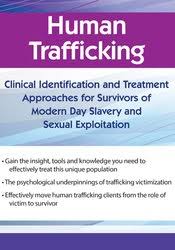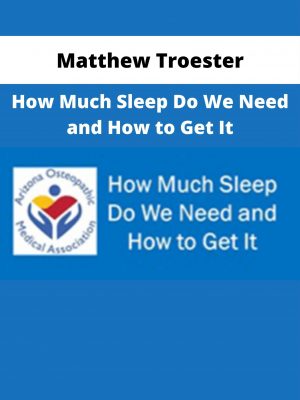Shari Kim – Human Trafficking, Clinical Identification and Treatment Approaches
$200 Original price was: $200.$75Current price is: $75.
Shopping Instructions:
- DISCOUNT 15% : SHOP15
- Product Delivery: Within 1 – 12 hours after purchase.
This issue is much more common than you think and you need to be prepared to work with this unique population in your clinical practice. You may even have a client on your case load now that needs this special specialized treatment.
Shari Kim – Human Trafficking, Clinical Identification and Treatment Approaches
Will you be ready to serve a survivor of modern-day slavery when he or she enters your therapy office?
Human trafficking is the second-largest industry for organized crime in the world. It often happens locally, with people being trafficked by people they know from their own neighborhoods
Far from just sex trafficking, human trafficking also involves labor trafficking, child soldiers, and organ donation.
This issue is much more common than you think and you need to be prepared to work with this unique population in your clinical practice. You may even have a client on your case load now that needs this special specialized treatment.
Understanding trauma helps, but it is not enough to provide sufficient and effective care for the struggles these survivors have endured. Trafficking survivors have a unique set of needs that differs from other cases of trauma entering your therapy office.
Complex trauma is overlaid with brainwashing and Stockholm Syndrome, providing an extremely complicated set of needs in this population. Great harm can be done both to the safety and to the mental health of this population if we fail to identify and treat their special needs.
This training will give you the tools you need to safely and skillfully guide these survivors through the process of transformation from being someone’s product to feeling like a person again.
- Identify the signs that a client has been trafficked and determine a proper treatment plan.
- Create the appropriate therapeutic environment to enable the best clinical outcomes for a trafficking survivor.
- Differentiate among the various types of trafficking, including: sex trafficking, labor trafficking, child soldiers and organ donation to better inform clinical assessment and treatment interventions.
- Review federal laws specific to human trafficking and identify how this information could impact clinical treatment.
- Utilize a strength-based treatment approach for clinical issues such as PTSD, Stockholm Syndrome, and brainwashing.
- Determine how to facilitate post traumatic growth among survivors of human trafficking.
Would you like to receive Shari Kim – Human Trafficking, Clinical Identification and Treatment Approaches ?
Human Trafficking: What You Need to Know
- Legal and clinical definition
- Types of trafficking
- Labor trafficking
- Sex trafficking
- Child soldiers
- Organ donation
- Closer than you think: Where people are trafficked
- Risk factors for trafficking victimization
The Legal Process
- Federal and local trafficking protections
- Why it’s so difficult to investigate and prosecute trafficking cases
- The unique protection needs of trafficking survivors
- Case examples
Clinical Treatment for Human Trafficking Survivors
- How to identify and assessment tools
- Identify risk in the clinical interview
- What to watch for in session
- Trafficking screening and assessment tools
- How to respond if you suspect trafficking
Overcome Brainwashing and Stockholm Syndrome
- Understand the psychological underpinnings of entry to trafficking
- Why victims stay (and why they return)
- Psychological processes of luring in victims
Treating the Trauma of Trafficking
- Evidence-based treatment for traumatic stress (e.g. Prolonged Exposure, EMDR)
- Strengths-based treatment approaches
- The essential components of trauma-informed care
- Treatment matching for different types of trafficking
Post-Traumatic Growth: Transformation from Victim to Survivor
- Help clients find meaning after trauma
- Create a comprehensive, individualized recovery plan
- Case examples: From trauma to recovery
Potential Treatment Obstacles (and What to do About Them)
- Building and maintaining trust with a trafficking victim
- The power of brainwashing
- Risk of returning to trafficking
- Safety Issues
Related products
HEALTH & MEDICAL
HEALTH & MEDICAL
HEALTH & MEDICAL
Matthew Troester – How Much Sleep Do We Need and How to Get It
HEALTH & MEDICAL
HEALTH & MEDICAL
HEALTH & MEDICAL
HEALTH & MEDICAL
Bernadette Giorgi – Attitude Ballet & Pilates Fusion – Just B Method
HEALTH & MEDICAL
Dr Heidi M Crocker – Yoga Alignment | Speaker: Heidi Crocker EdD, DC












